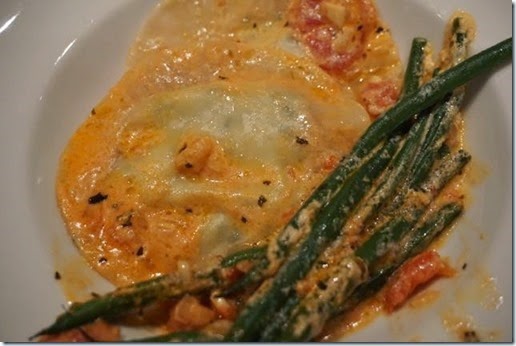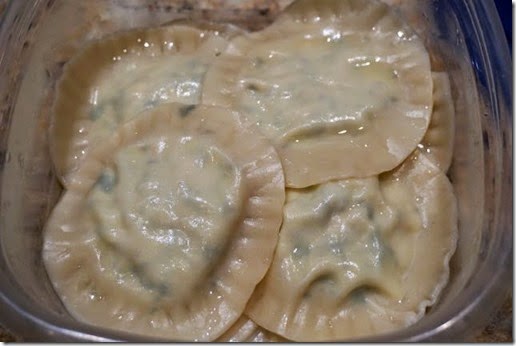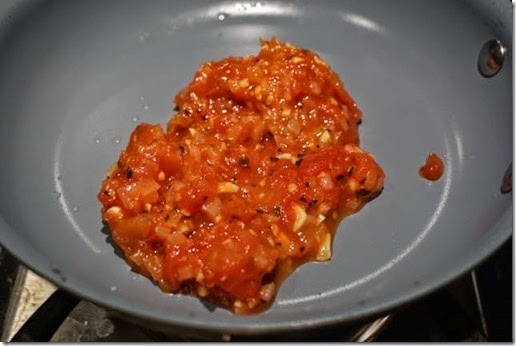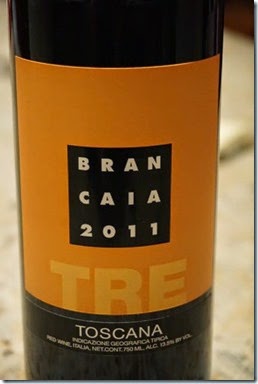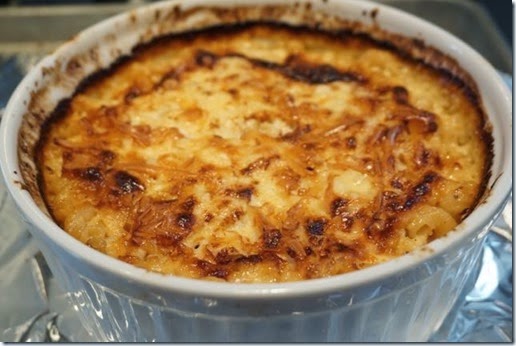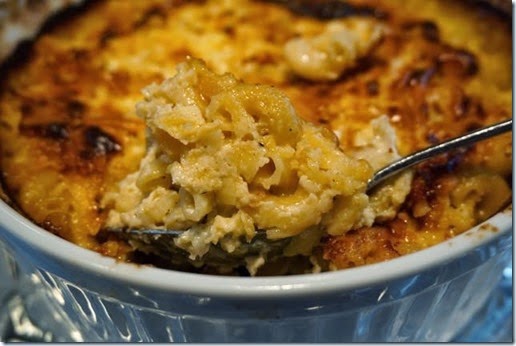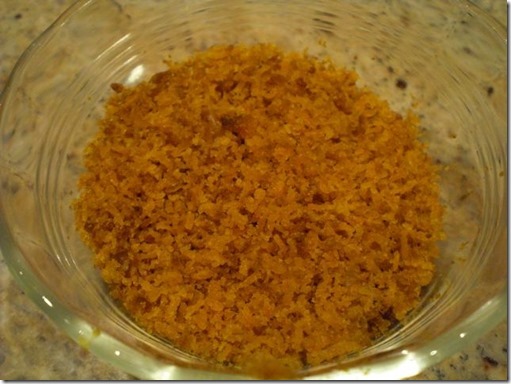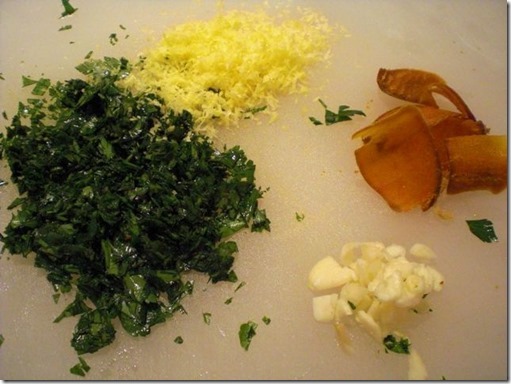"Macaroni and cheese" a.k.a. "Mac and Cheese" is a quintessential American comfort food. Most people in the U.S., including my wife, have grown up eating
Kraft "Mac and Cheese" in the blue box. The product is bright yellow and sweet, made of powdered cheddar cheese--kids love it. In recent years, gourmet versions of "Mac and Cheese" started appearing in many good restaurants. We (mostly my wife) tried several and pronounced them "very good". Besides these restaurants, my wife had "Mac and Cheese" at a semi-gourmet fast food restaurant/cafeteria
"Wolfgang Puck Express" at the the Denver airport. Since airlines no longer serve food, she found the nice, big, still warm, comforting bowl of really good "Mac and Cheese" especially gratifying and reported to me that she liked it. Sometime later, I too, had a chance to try Wolfgang Puck Express "Mac and Cheese" at the Denver airport during a business trip but I found it way too greasy and I did not like it. When I reported this to my wife she replied, "for those who do most of their praying during take-offs and landings even greasy Mac and cheese is ethereal". Thus, mostly for my wife, I made my version of "Mac and Cheese".
I think that the quality and types of cheeses are most important. My recipe is nothing unusual. I first make béchamel sauce and add cheeses, combined with cooked elbow macaroni and bake. This recipe is for about 6 oz of macaroni, which makes about 4 small servings. We cooked one box (16 oz) of elbow macaroni and we used about 2/3 for
macaroni salad and 1/3 for Mac and cheese.
Macaroni: As per the instruction on the package, cook Macaroni (al dente, since this will be further baked). I season it with salt and pepper in a colander immediately after draining and coat it with a small amount of olive oil. The macaroni alone at this stage should be well seasoned and taste fairly good.
Sauce: I first make béchamel. I finely chop shallot (one medium or 1/2 large), and saute in olive oil (3 tbs) and butter (1/2 tbs) and add flour (3 tbs). Cook flour for 1-2 minutes (do not brown, we are not making brow roux) and add about 2 cups of milk (I used 1%) at once and whisk to resolve and keep stirring until it thickens. Add more milk depending on the consistency of the sauce. I keep this rather loose since the addition of the cheeses makes the sauce thick. I season it with salt, pepper, and freshly grated nutmeg. Using freshly grated nutmeg makes a big difference in taste.
Cheeses: Use decent quality cheeses. Cheddar cheese is an absolute "must". Unfortunately when it is cooked for a long time at a high temperature, it becomes grainy, so I mix it into the béchamel just before baking. Besides cheddar, I also use a combination of different cheeses depending on what we have in our refrigerator. This time, I made the mistake of using too much fresh goat cheese in the sauce. It made the sauce a bit grainy. I usually use any combination of Gruyere, Pecorino Romano, and Raclette. Tonight, I had Gruyere, Raclette, fresh goat cheese, and
Parmigiano reggiano. The amount of the cheese is arbitrary but I used a total of 1 cup of shredded Gruyere and Raclette in addition to fresh goat cheese (1/4 cup). If the sauce becomes too stiff after the cheese is incorporated, you could add more milk. The sauce should be a bit runny because the macaroni absorbs some of the liquid while it bakes and the sauce may end up dry rather than creamy.
I poured the sauce into the cooked macaroni and mixed in shredded cheddar (1/2 cup, I used aged sharp cheddar). I tasted the mixture and adjusted the seasoning. I apportioned the mixture into 4 small individual ramekins. I grated Parmigiano reggiano cheese on the top. You could use bread crumbs on the top as well, but I did not. I baked it in a 400F (toaster) oven for 7-10 minutes or until the surface browns and the sauce is bubbling.
This was not bad (my wife's opinion was much less reserved but, then again, she may be biased). Nonetheless, to me, the sauce was a bit too grainy and I blame it on the goat cheese. Next time I will have to be more moderate in using it. In any case, this was far better than Kraft's or Wolfgang Puck's mac and cheese. This dish goes well with wines and beer (although we drink beer extremely rarely). I would suggest Izakaya in Japan consider serving this. It may become a big hit.
P.S. We had this later in the week as leftovers reheated in the toaster oven. Strangely enough, the taste and texture were much better and the graininess of the sauce disappeared.















